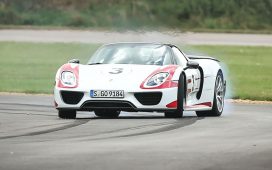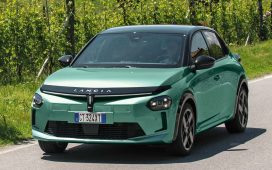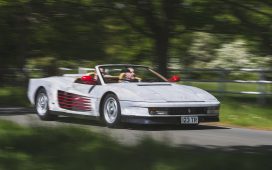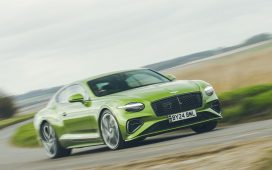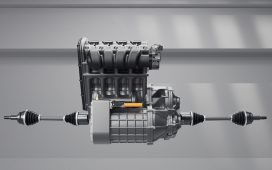Key Takeaways
- Electric vehicles have greatly improved range and charging infrastructure over the past decade, making them more practical for everyday use and long-distance travel.
- EVs have instant torque and are capable of impressive acceleration, debunking the myth that they lack power compared to traditional combustion engine vehicles.
- The cost of electric vehicles has significantly decreased, with options available at various price points that offer comparable or better performance than their gas-powered counterparts. The value proposition of EVs is now more attractive than ever.
If electric vehicle owners had a nickel for every time they were asked a pointed question about their cars completely based on abundantly propagated myths, let’s say they’d have enough nickels to charge their cars for a month. EVs have had a long and storied journey from their conceptual start to the multi-billion dollar market share they have today, and along the way, many misconceptions stuck around.
Some of these were simply fiction, and some are concerns or issues that were absolutely real…10 years ago. For anyone considering buying their first EV or skeptical of them as a whole, we wanted to get everyone up to date. We’ve put together this list of the five most commonly heard myths about electric vehicles, and we explain how they’ve become part of a narrative that isn’t entirely true.
5 Electric vehicles have terrible range
In 2012 Tesla launched the Model S with a 40kwh battery pack for $49,000. 11 years ago, this base model came EPA-rated for 139 miles from a full charge, though at highway speeds that could end up being just about 100 miles of range and no electric charging infrastructure to speak of. In fact, in 2011, Kurt Kelty, Teslas then director of battery technology, said, “We don’t need a charging infrastructure throughout the country.” By 2013, there were only 8 superchargers in the entire U.S. Much ink was spilled reviling the Model S and the absolute impracticality of electric vehicles. In a 2011 survey on EVs, the Consumer Electronics Association found that 71 percent of respondents feared running out of charge on the road. This fear found its way firmly into the zeitgeist and has stubbornly survived ever since.
Today the cheapest new electric vehicle you can buy is the 2023 Chevy Bolt, with an MSRP of $27,495 and an EPA range of 259 miles. Almost double that first Model S range for almost half the price. Meanwhile, the most affordable Tesla, the Model 3 Standard Range, retails for $40,240 with an EPA range of 272 miles. This is to say nothing of the newest Tesla Model S and Lucid Air with 400+ and 500+ miles of range, albeit at higher price points.
Tesla
In 2023 between Tesla’s supercharging network (which will soon open to all EVs) and existing infrastructure, there are over 20,000 Level 3 fast chargers in the U.S., and estimates place them at over 100,000 by 2027 between future growth in private sector projects, and public investment in charging infrastructure. There are now enough fast chargers for almost any road trip in the U.S. you can dream of, found at regular intervals along interstate highways. This author has taken his Tesla Model Y from Texas to Florida and back without a hitch.
4 Electric vehicles take a long time to charge
When the first Tesla Model S was released, and the supercharging network was in its infancy, fast chargers could deliver about 90kW of peak power. This would charge the battery pack at a rate of about half a charge in 30 minutes and a full charge in an hour. Of course, even that full charge wouldn’t get you very far back then.
Today most Level 3 chargers, especially Tesla’s V3 superchargers, can deliver power at rates as high as 250kW. A modern base-model Tesla like the Model 3 can add back 100 miles of range in about 10 minutes and 200 miles of range in about 20, with slight variances by model. The base model Kia EV6, with 252 miles of range, can go from 10% to 80% in 18 minutes. With today’s modern EVs taking a road trip is as easy as stopping to stretch your legs and grab a snack every 200 miles or so.
3 Electric vehicles have no power
Instant torque is a powerful force, and EVs have it. Electric vehicles are extremely zippy because torque is virtually instantly delivered to the wheels from the motor(s). In 2010 Nissan launched the Nissan Leaf, an economy car that was not meant to be a sports car. The base model shipped with a motor that produced 107 horsepower and 207 lb-ft of torque, which sported a 0-60 MPH time of seven seconds. In context, the 2010 BMW base model 3-series ran a 0-60 in right around the same time.
Today the slowest Tesla, the Standard Range Model 3, runs a 0-60 in 5.8 seconds. The entry-level Ford Lightning clocks in at 4.2 seconds, and the sportier BMW i4 M50 runs it in 3.3 seconds. Higher-end EVs like the Lucid Air can do 0-60 in less than 2 seconds. For context, the Porsche 718 Cayman comes in at 4.9 seconds.
2 Electric vehicles are too expensive
The original Tesla Roadster, the company’s first vehicle, sold for over $100,000, with some models sporting an MSRP of $120,000. For that price, you got a sports car that went 0-60 in 4 seconds, and getting 200 miles on a charge at highway speeds would be pushing it. The value proposition was definitely not there. You could get faster, more reliable sports cars for the same price or less in 2008 when the first one was delivered.
Today’s figures paint a different story. The all-electric BMW i4 M50 boasts 536 horsepower, 586 Lb-ft of torque, and a 0-60 of 3.7 seconds at an MSRP of $69,700. The M4 Coupe, which is the BMW’s performance-focused M-badged gas version of the 4-series, comes in at 473 horsepower, 406 Lb-ft of torque, and a 0-60 of 4.1 seconds, all for an MSRP of $79,095.
As a more affordable example, the standard range Tesla Model 3 sedan retails for $40,240. For that price you’ll get 271 horsepower and 310 Lb-ft of torque with a 0-60 speed of 5.8 seconds. The entry level 330i 3 series from BMW, one of the Model 3’s closest competitors, retails for a starting MSRP of $44,500. For over $4,000 more you’ll be getting 255 horsepower and 295 Lb-ft of torque with a 0-60 of 5.6 seconds.
The value proposition in today’s EVs for what you get is absolutely fantastic, typically being comparable or better to a gas equivalent in their same class. Chevrolet, Hyundai, and Nissan all sell electric vehicles starting below $35,000, and more affordable EV’s are release every year.
1 Electric vehicles will blow up
We’ll keep this short and sweet. While headlines may portray EVs as having a higher fire incident rate than gas or diesel-powered vehicles, the facts do not support that conclusion, but they sure make for a clickable article. While American authorities don’t break down vehicle fire statistics between EVs and fossil fuel-powered vehicles, the Swedes do, so let’s take a look. The Swedish Authority for Social Protection and Preparedness released the first report on this subject, and their findings were clear.
They found that EVs and hybrids were catching fire at a rate of 1 in 38,000 vehicles a year, while gas and diesel-powered vehicles were catching fire at a rate of 1 in 1,300 vehicles each year. This means gas-powered vehicles were 29 times more likely to catch fire than EV and hybrid ones. MotorTrend has a really thorough deep dive into this subject if you want to know more.
Overall it’s clear that much of the general impression that none EV owners have of EVs was formed a long time ago, and without owning one themselves, many of these perceptions are stuck in the general consciousness. Electric vehicles have come a long way and continue to break barriers with each passing model year.






